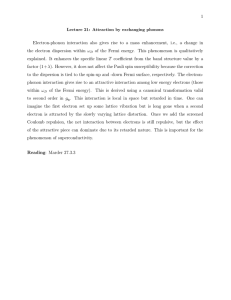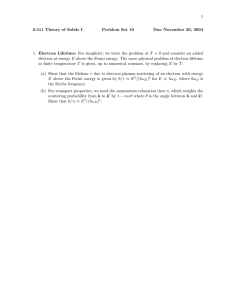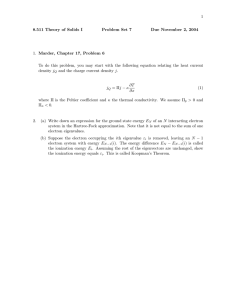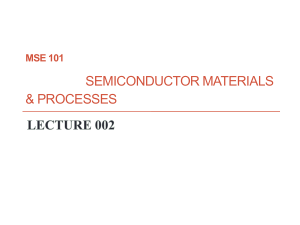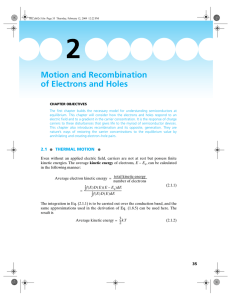UNIVERSITY OF CALIFORNIA College of Engineering
advertisement
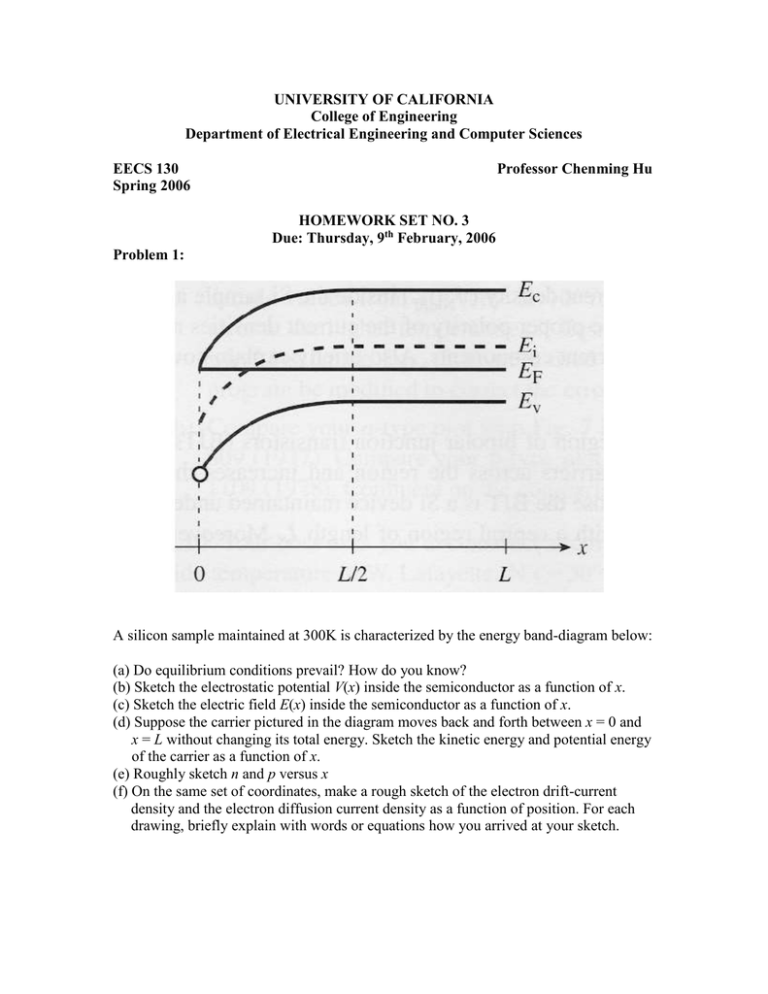
UNIVERSITY OF CALIFORNIA College of Engineering Department of Electrical Engineering and Computer Sciences EECS 130 Spring 2006 Professor Chenming Hu HOMEWORK SET NO. 3 Due: Thursday, 9th February, 2006 Problem 1: A silicon sample maintained at 300K is characterized by the energy band-diagram below: (a) Do equilibrium conditions prevail? How do you know? (b) Sketch the electrostatic potential V(x) inside the semiconductor as a function of x. (c) Sketch the electric field E(x) inside the semiconductor as a function of x. (d) Suppose the carrier pictured in the diagram moves back and forth between x = 0 and x = L without changing its total energy. Sketch the kinetic energy and potential energy of the carrier as a function of x. (e) Roughly sketch n and p versus x (f) On the same set of coordinates, make a rough sketch of the electron drift-current density and the electron diffusion current density as a function of position. For each drawing, briefly explain with words or equations how you arrived at your sketch. Problem 2: A general relationship for the current density carried by electrons of density n is J = qnv, where q is the electronic charge and v is the electron velocity due to drift and/or diffusion. (a) Find the velocity of electrons, v(x), that are moving only by diffusion if they have a density distribution of n(x) = noexp(-x/). The electric field is zero. (b) What would be the electric field, (x), that would lead to an electron drift velocity equal to that of the diffusion velocity in part (a)? (c) At 300K, what value of would make the field in part (b) to be 1000 V/cm? Problem 3: The electron mobility is determined by collisions which come in two flavors: 1) scattering due to phonons (lattice vibrations), and 2) scattering due to ionized impurities. The mobilities from phonon interactions alone, phonon, and from ionized impurities alone impurity, depend on the electron effective mass mn, ionized impurity density Ni, and temperature as follows: phonon 2.2 10 70 5/ 2 3/ 2 mn T 7.45 T 3 / 2 impurity m1n / 2 N i k g5 / 2 K 3 / 2 cm 2 /(V s) k 1g / 2 / cm K 3 / 2 V s Consider a uniformly doped N-type semiconductor with Nd=1017cm-3 and mn=0.26m0. (a) Make a plot of log(phonon) and log(impurity) versus temperature from 100K to 700K. (Hint: We recommend that you use math tool, e.g. Excel, Matlab, Mathematica, or Mathcad, to do this problem because using them is a valuable skill for engineers.) (b) What is the electron mobility at 300K? (c) Calculate the electron drift current density if the sample is biased as shown (T=300K): 1mm N-type sample 1V Problem 4: Consider the band diagram for a silicon bar of length L shown in the figure below. EC a EF EV b EG = 1.1 eV E x x=L (a) Determine the direction of electron/hole drift currents and electron/hole diffusion currents. (b) Develop an expression for electron and hole concentrations n(x) and p(x) respectively. (c) Prove equilibrium in the semiconductor by showing that Jn,total = Jp,total = 0. Note: Whenever Ef is flat it implies there is no net current flow in the semiconductor.
